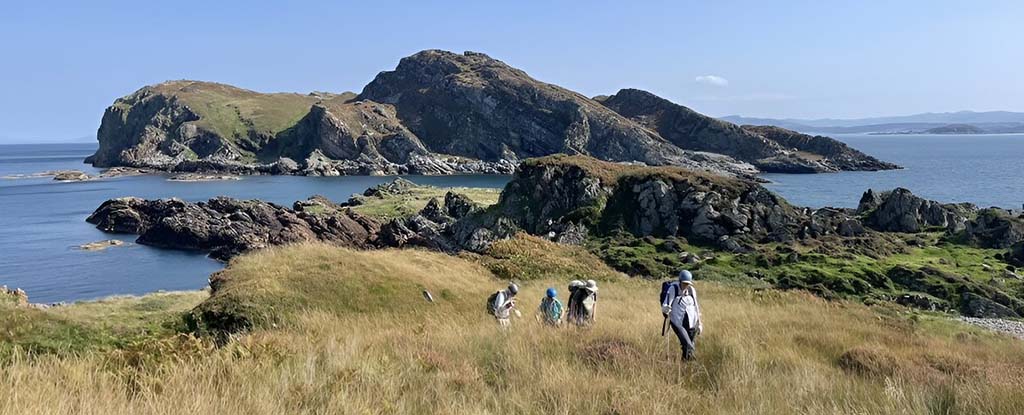Products You May Like
For nearly 60 million years, our home planet was likely frozen into a big snowball.
Now, scientists have discovered evidence of Earth’s transition from a tropical underwater world, writhing with photosynthetic bacteria, to a frozen wasteland – all preserved within the layers of giant rocks in a chain of Scottish and Irish islands.
The team, led by researchers from University College London (UCL), examined more than 2,000 grains of zircon from 11 sandstone samples, taken from up to 200 meters within the 1.1 km-thick (0.7 miles) Port Askaig formation, and the older, underlying Garbh Eileach formation, which is 70 meters thick.
These formations are part of the Dalradian Supergroup of Scotland and Ireland, a chain of geological formations spanning from Donegal in Ireland in a north-easterly line up through the center of Scotland, exposed to the surface in places like the Scottish island Garbh Eileach, where the researchers found their evidence.
Grains of zircon deposited in sedimentary layers can be used to determine the age of a rock layer. As zircon forms, it rejects any lead from nestling within its structure. But it always contains a degree of uranium, which eventually decays into lead at a constant rate over time, even if it’s nestled within lead-hating zircon.
So any lead found within zircon indicates decay from uranium, which provides an excellent record of time passing.
This technique revealed the rocks in the Port Askaig and Garbh Eileach formations were laid between 720 and 662 million years ago, a bracket of time during which Earth underwent drastic climatic change, the Sturtian glaciation.
This was the first of two worldwide ‘freezes’ that may have kickstarted multicellular life on Earth, so finding such a well-preserved geological archive of this time so close to the surface is pretty exciting (not to mention convenient).
“Our study provides the first conclusive age constraints for these Scottish and Irish rocks, confirming their global significance,” says Elias Rugen, an earth sciences PhD candidate at UCL.
Before the upper layers of rock were deposited during the “unimaginable cold” of the Sturtian glaciation, which some believe was a Snowball Earth event, the older layer of carbonate rocks formed in tropical waters, Elias explains.
“These layers record a tropical marine environment with flourishing cyanobacterial life that gradually became cooler, marking the end of a billion years or so of a temperate climate on Earth,” he says.
“Most areas of the world are missing this remarkable transition because the ancient glaciers scraped and eroded away the rocks underneath, but in Scotland by some miracle the transition can be seen.”
The age constraints they’ve defined for these rocks could mean the site becomes marked as the official starting point of the Cryogenian Period.
“These rocks record a time when Earth was covered in ice. All complex, multicellular life, such as animals, arose out of this deep freeze, with the first evidence in the fossil record appearing shortly after the planet thawed,” says UCL geochemist Graham Shields.
“The retreat of the ice would have been catastrophic. Life had been used to tens of millions of years of deep freeze. As soon as the world warmed up, all of life would have had to compete in an arms race to adapt. Whatever survived were the ancestors of all animals,” says Shields.
This research is published in the Journal of the Geological Society of London.
